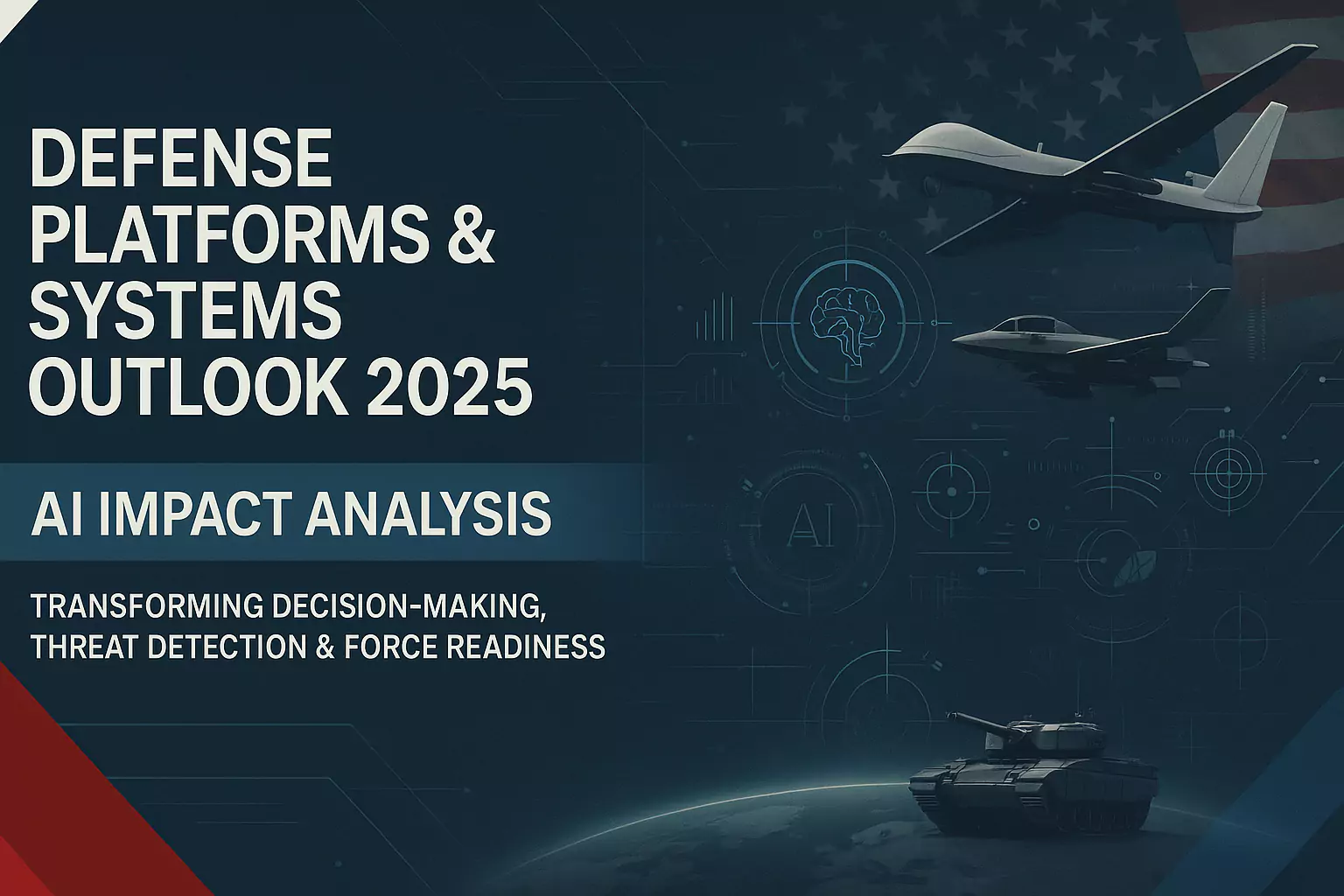AI Impact Analysis on Defense Platforms and Systems Industry
The global Defense Platforms and Systems Industry is undergoing rapid transformation as geopolitical instability, technological breakthroughs, and economic policy changes reshape the competitive landscape. Artificial Intelligence has emerged as one of the most disruptive forces driving modernization across command, control, communications, intelligence, surveillance, and weapon systems. Alongside these technological advancements, economic nationalism and protectionist trade policies like the Trump-era tariffs have introduced both uncertainty and opportunity for stakeholders in this highly strategic industry.
AI’s Influence on the Evolution of Defense Systems
Artificial Intelligence is increasingly embedded in the core of modern defense systems, impacting everything from autonomous vehicles and predictive maintenance to battlefield data analytics and AI-enabled electronic warfare. The convergence of machine learning algorithms, sensor fusion, and decision-support systems is enabling military organizations to respond faster and more accurately to emerging threats. AI-powered systems are improving decision-making processes, operational efficiency, and situational awareness in real-time, giving militaries a decisive edge.
The Rise of Autonomous and Unmanned Platforms
AI has been instrumental in accelerating the deployment of autonomous and unmanned platforms for land, sea, air, and space missions. Unmanned Aerial Vehicles, Unmanned Underwater Vehicles, and Unmanned Ground Vehicles now operate with AI-driven navigation, object recognition, and mission control capabilities. These systems reduce risks to human life while expanding operational reach and agility. AI also enhances swarm tactics, coordinated mission planning, and target acquisition, reshaping the way militaries approach asymmetric warfare.

AI-Driven Command, Control, and Communications Systems
Command and control systems are rapidly integrating AI-based analytics and automation capabilities to manage increasingly complex battlespaces. AI enables the fusion of intelligence from satellites, sensors, drones, and field operations into unified command centers, providing real-time situational awareness and predictive insights. AI-powered communications systems improve the speed, accuracy, and security of information exchange, ensuring mission-critical decisions are executed flawlessly, even in contested environments.
Smart Defense Electronics and Sensors
AI has redefined the performance of modern sensors, electronic warfare systems, and electronic countermeasures. AI-enhanced sensors can detect, track, and classify a greater range of threats under challenging conditions. Smart electronic systems leverage AI to optimize jamming, deception, and defense tactics against evolving electronic and cyber threats. AI also improves the energy efficiency, reliability, and interoperability of defense electronics deployed across multiple platforms.
Get AI Impact Analysis on Defense Platforms and Systems Outlook 2025, Request Pdf Brochure: https://www.marketsandmarkets.com/pdfdownloadNew.asp?id=184807569
Predictive Maintenance and Fleet Readiness
Artificial Intelligence offers tremendous value in predictive maintenance applications for defense platforms. By analyzing data from onboard systems, sensors, and historical logs, AI algorithms can anticipate equipment failures, recommend proactive maintenance, and optimize resource allocation. This improves operational readiness, extends the service life of critical systems, reduces downtime, and enhances mission reliability. AI-supported logistics and inventory management systems further streamline defense supply chains.
Economic Impact of Trump Tariffs on Defense Trade
The Trump administration’s tariff policies on imported steel, aluminum, and electronic components had significant implications for defense procurement and manufacturing. Higher input costs increased the price of weapon systems, vehicles, and electronic systems dependent on international supply chains. US-based defense contractors faced both rising expenses and retaliatory trade measures from global partners. Export markets for American-made defense systems experienced volatility, affecting profitability and strategic collaborations.
Disruption of Global Defense Supply Chains
Protectionist trade policies have disrupted international defense supply chains, forcing many companies to rethink sourcing strategies, partnerships, and manufacturing locations. Tariffs on components, raw materials, and sub-systems have driven up costs and led to project delays. To mitigate risks, defense organizations are diversifying supplier bases, reshoring critical production, and investing in local capabilities. AI is playing a pivotal role in supply chain analytics, risk assessment, and decision support.
Market Growth, Innovation, and Trade Barriers
Despite trade tensions, AI continues to drive strong market growth and innovation in defense systems. Nations are prioritizing investments in AI-enabled platforms to counter increasingly sophisticated threats. However, trade barriers, tariffs, and regulatory restrictions limit access to critical technologies and global markets. Countries are pursuing self-reliance in defense manufacturing and AI development, fostering a more fragmented and competitive landscape.
Regional Outlook and Strategic Implications
Different regions are adapting uniquely to the dual challenges of AI disruption and trade tensions. The US, EU, and China are advancing AI defense programs while navigating trade restrictions and industrial policy shifts. Middle Eastern and Asia-Pacific nations are investing in AI-driven defense technologies to modernize their militaries and secure strategic autonomy. These regional variations are reshaping alliances, defense procurement patterns, and technology-sharing agreements.
Future Prospects and Market Forecast
Looking ahead to 2025, the global defense platforms and systems market is expected to see accelerated adoption of AI-powered technologies, with continued emphasis on unmanned systems, intelligent sensors, autonomous command and control, and predictive maintenance solutions. Trade tensions, tariff disputes, and protectionist policies will remain a challenge, influencing procurement decisions, supply chain management, and international collaboration. Companies that successfully navigate both the technological and geopolitical complexities will lead the market, while those that fail to adapt risk obsolescence.
Related Report:
Defense Platforms and Systems Outlook Market 2025: Emerging Technologies, Evolving Disruptions, Outlook and Growth Opportunities
This FREE sample includes market data points, ranging from trend analyses to market estimates & forecasts. See for yourself.
SEND ME A FREE SAMPLE





